John B Watson, Dark Psychologist
John Broadus Watson was born in 1878, the fourth of six children. His father, Pickens Butler Watson, had fought for the Confederates in the Civil War and had never really settled down afterwards. He spent most of his time away from home, leaving his children to be raised by their mother Emma on their small farm. Emma was a devoted Baptist, who hoped her son would become a minister. She was also a realist, and knew that her children would need a solid education. So in 1890 when Watson was only 12 his mother sold the farm and moved the family to Greenville, South Carolina.
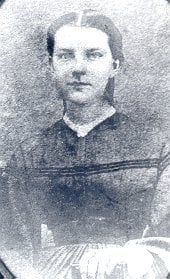
Watson didn’t enjoy the move to the big city, and was a frequent target of school bullies as “the dumb country kid”. This frustration drew him into delinquency, and specifically into hate crime. In fact Watson was arrested for his attacks on local black people – even by 1890s standards he was considered extreme. Still, his mother’s influence with the local Baptist church was enough to get him a place at Furman University. He was an indifferent student but was talented enough to get a master’s degree, and smart enough to realise that academia offered a route out of the rural life he’d grown to despise. Initially after he graduated he took a job as the principal of an academy in South Carolina, but his mother’s death in 1900 left him with no reason to stay in the state. In the fall he moved to Illinois, where he enrolled to study psychology at the University of Chicago.
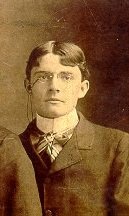
Psychology as a discipline was still in its infancy at the time, and it was a good place for an ambitious man to make his mark. The professors at Chicago were pioneering a functional approach to psychology, as opposed to the European ideas that started from attempting to structure the mind. In fact, the very nature of the “mind” itself was a hot topic of debate – the division between philosophy and psychology was still a very blurred line. Watson himself originally enrolled in a philosophy doctorate, but soon changed that to “experimental psychology”. His mentor was James Rowland Angell, one of the early pioneers of psychology who encouraged him to study neurology as a secondary subject. This focus on the brain was to have a huge influence on Watson’s early career. His dissertation on the development of intelligence in rats is sometimes considered the first true psychology experiment for his emphasis on direct observation, prediction and systemic analysis. Almost as influential was the mental breakdown he suffered in 1903, as the direct experience of this mental cascade proved highly valuable to him.
Watson received his PhD in 1903 aged 25, notably young for such a qualification. The following year he represented Chicago at the Congress of Arts and Sciences in St Louis, and he became a leading voice among those calling for psychology to sever its ties with philosophy and align itself with the biological sciences. At the same time, Watson had become romantically involved with one of his students, a woman named Mary Ickes. Nowadays this would be considered a huge breach of ethics, of course, and even at the time the pair kept their relationship secret until after Mary had left the university. It was a sign of things to come. The marriage was not a happy one, though Watson did find that the daughter who was born in 1906 was one of the few things that could distract him from his experiments. He told one of his friends that she was:
More fun to the square inch than all the frogs and rats in creation.
Rats got Watson into trouble that same year, as a paper he presented on how depriving rats of their sight or sense of smell affected their development led to a backlash about cruelty to animals. Several national newspapers turned Watson into a minor scandal, but the results actually turned out well for him in the long run. The psychology community rallied to his defence, and as a result he became considered a top man in the field. He even used the notoriety to write articles for national magazines like The World Today. This led to him getting a research grant from the Carnegie Institution, a signal honour.

In 1908 Watson left Chicago to take up a full professorship at John Hopkins University in Baltimore. He received an unexpected promotion when the department’s head, James Baldwin, was caught by the police during a raid on a brothel. Though his position meant that no charges were brought, he was forced to resign. As a result Watson wound up effectively the head of the department. In 1910 he co-founded the Journal of Animal Behaviour, [1] a research journal that backed up his position that experimental psychology on animals was crucial to understanding human psychology. From this, he began to redefine psychology and to draw up his own model for how to approach it – based on the earlier work of Pavlov, among others. In 1913, in a series of lectures at Columbia University, Watson laid out the essentials of his new approach.
Watson described his approach to psychology as “behaviourism” – the idea that observable behaviour is all that is required to understand the psychology of a person or animal. [2] This stood in stark contrast to “introspective psychology”, which tried to develop a theory of what the mind was and how it worked before getting into what it actually did. Behaviourism could be considered more modern, though it does ignore a lot of what modern psychology considers a key component – the physiological actions within the brain. At the time, though, Watson’s approach was groundbreaking. More groundbreaking still though was his logical extension of this. If we understood this behaviour – if we knew what external stimuli brought it about – then it was a short step from there to actually controlling it.
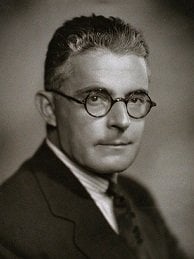
The main focus of Watson’s new approach, really, was to make psychology actually useful. In his view, unless psychology produced actual value it would never be truly accepted by the scientific establishment. What he lacked was an arena to put his new theories to the test. His primary focus turned towards the business world. Watson became convinced that his techniques could help in industrial recruitment and training, as well as ensure order in the workspace. He soon had the opportunity to put those techniques into practice in a very different organisation, when America went to war.
The initial application of psychology in the US Army came in the form of selecting candidates from the enlisted men for officer training. These were the first aptitude tests, and they proved hugely useful in helping the army automate the process of personnel selection. Watson was sent to Europe to study British aviators, in order to develop aptitude tests for US airmen. This was frustrated when a large portion of the men he’d been sent to study were killed in battle, and he had to go through shelling in Paris and air raids in London for nothing. His criticisms of the Army over this nearly got him court-marshalled, and though he avoided this he was deeply unimpressed by the armed forces. His Southern sensibilities were equally outraged by another development – the aptitude tests didn’t discriminate on race, and the sight of black officers was something he found very disquieting.
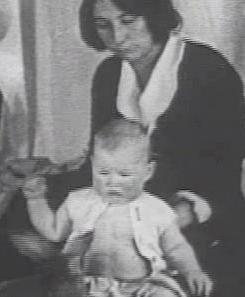
Though the war didn’t directly benefit Watson, it did popularize the idea of applied psychology for recruitment and training. As a result he and several other academics formed a consultancy company that used wartime connections forged with industry to apply the aptitude and training techniques to the workforce. Watson also got work from the US Social Hygiene Board to study the effectiveness of VD Safety films, a precursor to some of his later work. He also ran a controversial experiment in which he conditioned a baby boy (named Albert B in the research papers) to feel fear at the sight of animals. The experiment was considered a rousing success, and marked the high point of Watson’s academic career. [3] It was significant for another reason however, as Watson’s research assistant on the experiment was a young woman named Rosalie Rayner.
Watson was forty-two years old when Rosalie (around half that age) came to study at John Hopkins. She was from a powerful family – her uncle was a US senator – and so when they began an affair he initially disguised it as an attempt to cultivate her family as a useful connection. But his wife wasn’t fooled. This wasn’t his first affair, though she’d never been able to prove it before. However Watson’s infatuation with Rosalie led to indiscretion, and when the Watsons were visiting the Rayner family Mary sneaked into Rosalie’s bedroom and found several love letters from her husband. With the aid of these letters she divorced her husband in 1920, winning custody of their two daughters along with a generous alimony settlement.
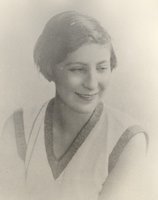
Watson didn’t make any attempt to hide his relationship with Rosalie after his divorce, which turned out to be a major miscalculation. He was convinced that his academic reputation was too valuable to John Hopkins University for any action to be taken against him. The board of trustees chose to disagree. Not only had Watson conducted his affair with a student, but that student’s grandfather was a major donor to the school. They couldn’t just let this slide. In October of 1920, a month before his divorce trial, Watson was called into the university president’s office and offered a chance to jump before he was pushed. He wrote out his resignation on the spot.
The trial, unsurprisingly, turned into a major national scandal. Someone (possibly a vengeful Mary) leaked one of Watson’s love letters to the press, who printed it out in full. Mary herself was interviewed by several papers and gave an impression that was benign on the surface, but filled with hidden barbs. After all this publicity Watson knew that he had little chance of finding a position at another university. Most of the academic community was sympathetic, but not enough for any university to risk the public outcry of hiring him. So Watson was forced to look elsewhere – to the private sector.
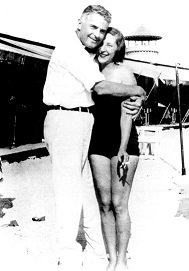
Rosalie Rayner and John Broadus Watson were married on December 31st 1920. Shortly before that Watson began a new job as an executive at the J Walter Thompson advertising agency. As was traditional at the company Watson had to spend several months selling samples door to door and working behind the grocery counter at Macy’s in order to give him an understanding of the behaviour of customers. His salary was twenty five thousand dollars a year – four times what he had made as an academic. He would earn every penny. He was about to revolutionise the advertising industry.
Watson’s big innovation was his realisation that facts were largely irrelevant to selling products. What was important was provoking an emotional response – fear, anger (though not too much anger), love. The first of those was the root of one of his most successful campaigns, the one for Johnson’s baby powder. The campaign was specifically targeted at middle-class white mothers, and the language used was carefully selected. The powder was “pure” and “clean”, while failure to use it “exposed children to the risk of infection”. The idea was to make the women afraid for their children, and afraid to be seen as bad mothers if they failed to use the powder. Naturally the campaign was a huge success.
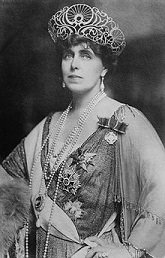
Watson was also a pioneer of “celebrity endorsement” of products. He had noted hero worship as a genuine phenomenon – people reacted emotionally to people they admired. By having those heroes associate with his products, he ensured that the same positive emotions were transferred to it. One example of that was his campaign for Pond’s face cream, which had gone into decline due to its perception as a “generic” product. When Queen Marie of Romania visited the US in 1923 and was prominently featured by many newspapers as a glamorous foreign royal, Watson had her sent free samples of Pond’s products in order to gain her endorsement. Soon the face cream was once again a big seller.
Part of Watson’s genius was to tie his products to existing social trends, often in unexpected ways. For example, in the mid 1920s many women were taking up smoking as part of a way to show themselves to be thoroughly modern and sophisticated. Watson designed a series of adverts that revolved around a woman seductively smoking a cigarette, with the copy implying that she could do so without fear of harming her attractiveness because she used Pebeco Toothpaste. Thus the toothpaste was directly linked to sexuality and sexual need, a big step up in effectiveness from the usual health-based advertising.
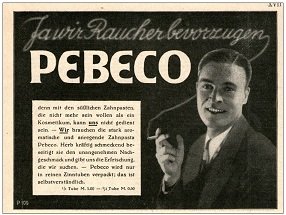
By the 1930s Watson was recognised as one of the foremost commercial psychologists in America. He applied his expertise not just to marketing, but also to management. His belief was that the ideal employee was one who was self-motivating, one to whom his job became an integral part of his identity. [4] Such a person would put the goals of his corporation above his own personal life goals, unable to distinguish between work and life. The poisonous consequences of this type of approach, and the havoc it can wreak on unfortunate employees, lingers in the workplace to this day.
Watson may have moved out of academia, but he had not finished preaching the gospel of behaviourism. Instead Watson became the first “pop psychologist”, a media expert on psychological sciences. [5] In the mid-1920s he had a series of debates with the pseudoscientist William McDougall. McDougall preached a form of Lamarckian-style psychology, where children inherited drives that their parents had developed in life. He was abhorred by the psychological establishment, who felt that his views and high profile imperilled a quarter-century of work that had been done to establish psychology as a science. Watson’s use of his platform to denounce McDougall helped to rehabilitate him to a great deal of the psychology establishment, though a part-time position he had managed to get at the New School for Social Research (a research institute in New York) was terminated in 1926 for unspecified “sexual misconduct”.
The epitome of Watson’s views can be found in an article he wrote that was published in June 1929. Watson originally called it The Behaviourist’s Utopia, but it was published as Should A Child Have More Than One Mother? (The article seems to be an expansion on ideas he had previously stated in his book Psychological Care of Infant and Child.) In it, he argued that the modern family was totally unsuited for the purpose of raising children, because it “prolonged the period of infancy”. He spoke admiringly of the practice of child labour, and placed the blame for all modern ills on the affection parents showed to their children.
Never hug and kiss them, never let them sit on your lap. If you must, kiss them once on the forehead when they say good night. Shake hands with them in the morning. Give them a pat on the head if they have made an extraordinarily good job of a difficult task.

To prevent this, Watson suggested that breast feeding be prohibited, that mothers be prevented from knowing the identity of their children, and that children be rotated among parents at four week intervals until they reached the age of twenty. Watson’s misogyny shines out, as he simultaneously declared women unfit for the workplace and also condemned their influence on their children as the root of all complexes. In the most depressing (and predictable) aspect of his utopia, a woman’s prime purpose was to be “the art of interesting and handling men”, while “large women and the occasional ill-favoured woman are not allowed to breed.” Religion would be outlawed, and those who were unable to adjust to his “utopia” would be “restrained always, and made to earn their daily bread in vast manufacturing and agricultural institutions, escape from which is impossible”. Yet horrifying as Watson’s ideas taken to their logical conclusion were, he still proved enduringly popular to a public who found his certainties a welcome relief from the changing world of the 1930s.
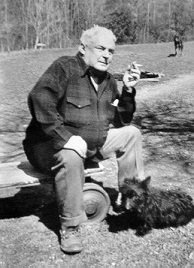
In 1935 Rosalie died suddenly of pneumonia. Over the previous fifteen years she had become the only one capable of drawing him out of his shell and into social engagements. With her gone, a mixture of grief and natural disposition caused the 57-year old Watson to become more and more reclusive. He had had two sons with Rosie, but his beliefs had led him to deliberately keep an emotional distance from them that would lead to complete estrangement as they grew up. In 1945 he retired from advertising, and moved to Connecticut where he lived a hermit-like existence. Revealingly the one-time country boy had bought a farm, and his old age mirrored the patterns of his youth – falling into the rhythm of feeding and caring for animals and growing fruit trees. In 1957 the American Psychological Association wished to make him the guest of honour at their annual meeting, but Watson turned them down at the last minute. He sent his son in his stead, as he was worried he might break down and cry. It would be shameful, he’s reported to have thought, if the great patron of behaviourism let his emotions get the better of him. A year later, aged eighty years old, he died on his farm. The advertising revolution he spawned, based on emotional resonance over facts, continues unabated to this day.
Images via wikimedia, Furman University and Alchetron except where stated.
This article was inspired by Psycomedia and the book Mechanical Man.
[1] Not to be confused with the modern scientific journal “Animal Behaviour”, which was originally the “British Journal of Animal Behaviour”.
[2] Thanks to Malte Elson for pointing out that this shouldn’t be confused with BF Skinner’s later definition of behaviourism, which greatly expanded on and improved Watson’s work.
[3] Nowadays the use of a single subject, lack of a control, and failure to “decondition” Albert B have all led to the experiment having a much lower reputation among academics.
[4] Definitely “his” – Watson was never very comfortable with the idea of women in the workplace. His opinion was “a woman is foolish to spend her best years in the office…sharpening her brain when these things are of little importance to her in her emotional life as a woman”.
[5] He wasn’t above using this to also sell products via his own endorsement, of course.
